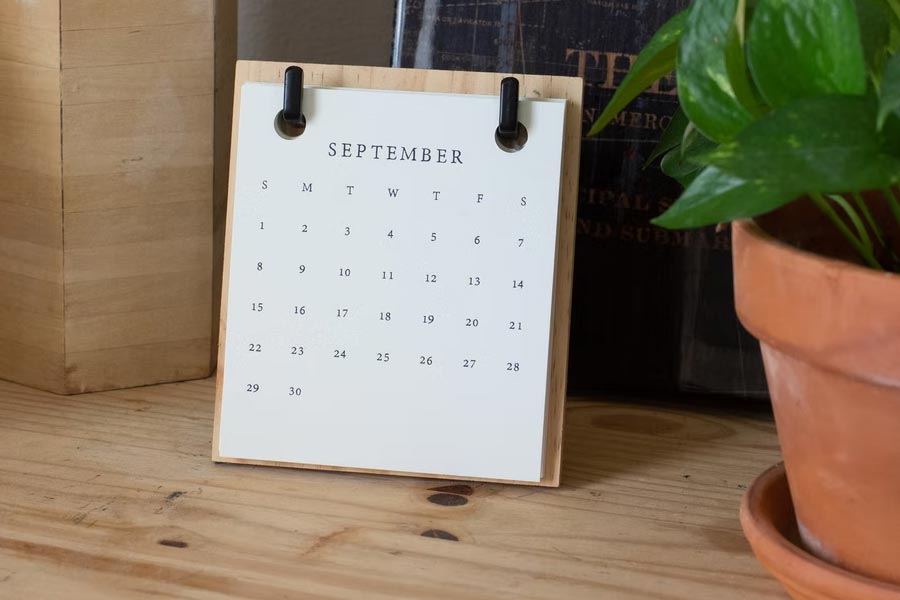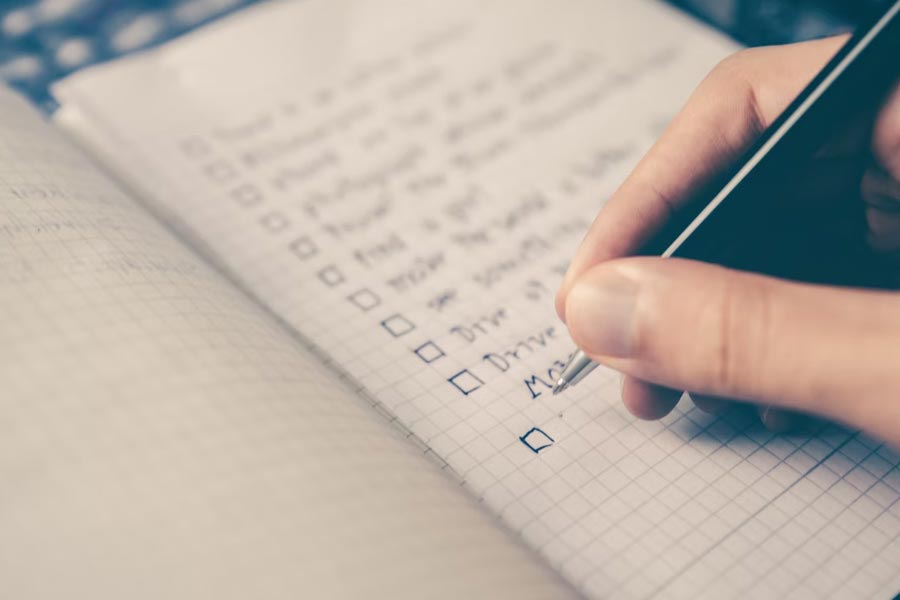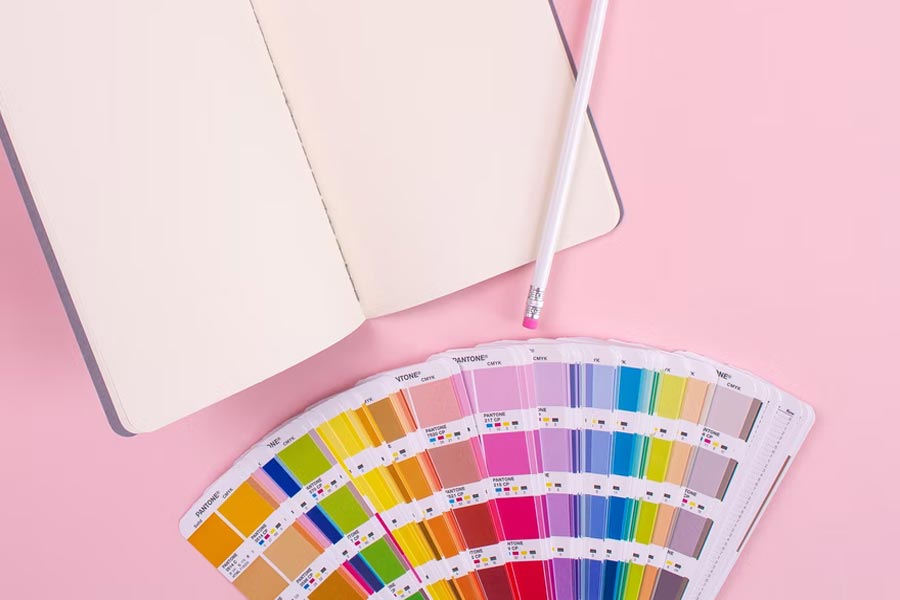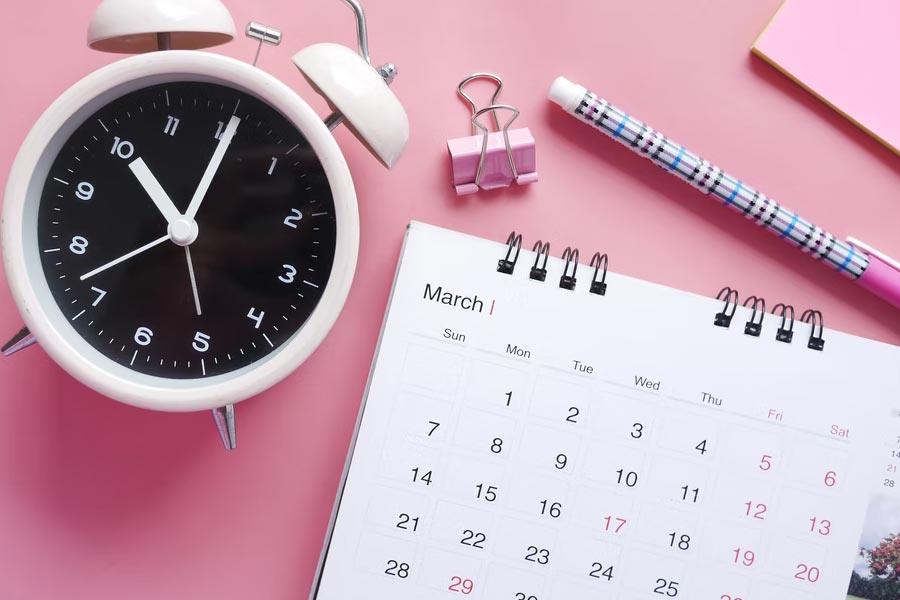One of the most common ways to keep track of appointments and other important dates is using a paper calendar. This type of calendar can be used in various ways, including planning your day and week and keeping track of ongoing deadlines. Here are 12 tips for using a paper calendar effectively:
1. Find a paper calendar that works for you
There are many different types of calendars on the market these days. Some people like to use a paper calendar to keep track of their appointments, tasks, and other events.
If you are looking for a paper calendar that will work for you, consider a few things.
First, think about the type of information you need to track. Some people prefer a calendar that has a large space for each day to write down all of their appointments and tasks. Others might prefer a calendar with smaller spaces to see more information at once.
Consider how much space you need to see at once and how often you will need to reference past months. Another factor to consider is the layout of the calendar.
Some people prefer a calendar where each month is on its page, while others prefer a calendar where several months are shown on one page.
2. Put your calendar in a visible spot

Putting your calendar in a visible spot is an easy way to help you remember your schedule. Having your calendar in a place where you will see it every day will help to keep you on track.
It is also an excellent way to avoid double-booking appointments or forgetting important dates.
3. Write down your to-dos

Many people have transitioned from physical calendars to electronic calendars on their phones or computers in the digital age.
While this method has its perks- like always having your calendar at your fingertips- some people find it more challenging to stick to a plan when all they have to rely on is a list of tasks on a screen.
For these people, using a paper calendar may be the answer.
One great thing about having a physical calendar is seeing your weeks and months at a glance. This way, you can estimate how much time you have to complete specific tasks.
It also helps prevent you from overscheduling yourself.
Another benefit of using a paper calendar is that you can physically write down your tasks instead of typing them into an electronic calendar.
If you like to keep a list of everything you have accomplished each day, or if you have a hectic schedule, this can be helpful. Some people even use paper calendars to track their weight loss and other health and fitness-related goals.
4. Use different colors for different events

Different colors can be used to represent different events on a paper calendar.
For example, blue can be used for appointments, green for holidays, and red for birthdays. This can make it easier to see which events are coming up quickly.
Additionally, different colors can differentiate between work and personal events. Use a pen or pencil and paper to write down important dates, appointments, notes, and reminders.
If you want to take advantage of the space provided on a paper calendar and use it for your personal information, you can simply write those notes using a pen or pencil.
5. Use symbols and abbreviations
A paper calendar is a great way to keep track of your schedule and to-do list. However, reading can be challenging if it is cluttered with too many words.
One way to make your calendar easier to read is to use symbols and abbreviations.
For example, you could use an asterisk (*) to indicate an appointment, a pound sign (#) to indicate a task, and a dollar sign ($) to indicate a budget.
You could also use abbreviations for common words, such as “Sun.” for Sunday and “Mon.” for Monday.
Using symbols and abbreviations on your paper calendar can keep your schedule organized and easy to read.
6. Use stickers to mark important dates
It can be easy to forget an important date when you have a lot going on, but with the help of stickers, you can easily keep track of everything.
By placing a sticker on your calendar for each important event, you’ll never miss another appointment or birthday again.
Place reminders on your phone. Some of us may forget that we’re meeting a friend for lunch or have an important appointment to meet in the morning.
You can find stickers in various colors and designs, so choose one that will stand out to you.
But if you can’t remember what you need to do, simply pull out your phone and remind yourself!
7. Plan ahead
The calendar is a great way to keep track of important dates, events, and tasks. It can be helpful to use a paper calendar in addition to electronic calendars because it allows for more space to write down details.
When planning, it’s essential to consider all the different aspects of an event or task. Having all the relevant information on one page can help ensure that nothing is forgotten.
Keeping track of the details in one place also helps keep things organized and more manageable. Ideally, each page should have a main heading and subheading, with all relevant information neatly organized under each heading.
8. Create a timeline and goal list
The best way to organize your time and achieve your goals is by writing them down on a calendar. First, create a timeline of the year, with significant events and deadlines noted.
Next, list out your goals for each month. Be specific and measurable, such as “run 3 times a week” or “save $200.”
Finally, add any other important tasks or appointments to the calendar. By seeing your goals in front of you, you’re more likely to stay on track and achieve them!
9. Use a planner to supplement your calendar
When it comes to staying organized, most people think of using a calendar. While a calendar is an essential tool for keeping track of appointments, events, and deadlines, it can be supplemented with a planner.
Planners come in all shapes and sizes, and there is one out there that will fit your specific needs.
A planner can be used to keep track of To-Do lists, goals, important phone numbers and addresses, and project deadlines.
It’s also a great place to record your thoughts and ideas. If you are someone who likes to write out your goals for the week or month, a planner is a great way to do that.
If you are looking for a way to get more organized in 2022, consider adding a planner to your arsenal of tools.
10. Review your goals and schedule for the month
Reviewing your goals and schedule for the month can help keep you motivated. Review your goals regularly, as they may change throughout the month. Check off items as you complete them to stay motivated.
11. Be flexible and make changes when necessary
There are many advantages of using a paper calendar: the flexibility to make changes when necessary.
For example, if you have a meeting scheduled for Wednesday, but you need to move it to Tuesday, you can easily make the change on your calendar.
This is impossible with most electronic calendars, which often require you to delete the meeting and re-enter it in the new date and time slot.
Additionally, if you are traveling and have internet access, you can still access your paper calendar even if you cannot get online.
You can do a few key things to make it easier to be flexible and make changes when needed. First, always be prepared for the unexpected. Have a plan B ready to go if your original plan doesn’t work out.
Second, stay open-minded and willing to compromise. Third, don’t be afraid of change; embrace it! Finally, learn from your mistakes and don’t dwell on them.
12.Update your calendar regularly
Your calendar is one of the essential tools to manage your time and schedule. However, it can only be effective if it is kept up-to-date. This means adding new events and tasks as they come up and deleting old items that are no longer relevant.
Here are a few tips for keeping your calendar current:
1) Add new events and tasks as soon as they come up. Don’t wait until the last minute – this will only lead to stress and chaos.
2) Delete old items that are no longer relevant. This includes canceled appointments, completed tasks, etc.
3) Update your calendar regularly. This means at least once a week, but preferably more often than that.
4) Use a different color pen or highlighter to indicate different types of events (e.g., “Meeting,” “Small Event,” “Telephone Call”). This will help you keep track of the different types of events on your calendar.
It is important to update your calendar at least once a month.
If you use a paper calendar, make sure that you write in the dates from the day before yesterday to the last day of the month so you have time to plan for the upcoming months.
In the end
We’ve shown you tips for getting the most out of the paper calendar. So, How do you use a paper calendars effectively?

